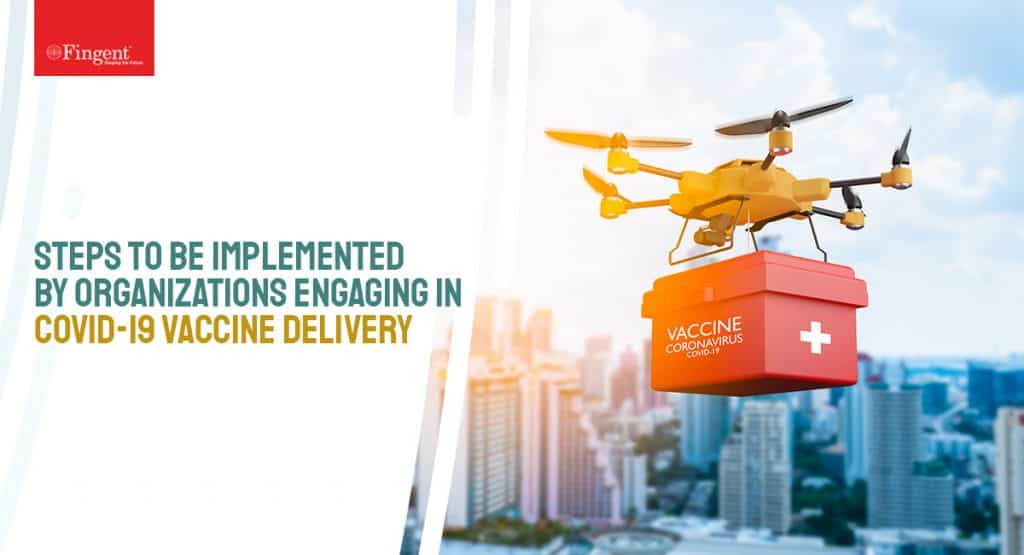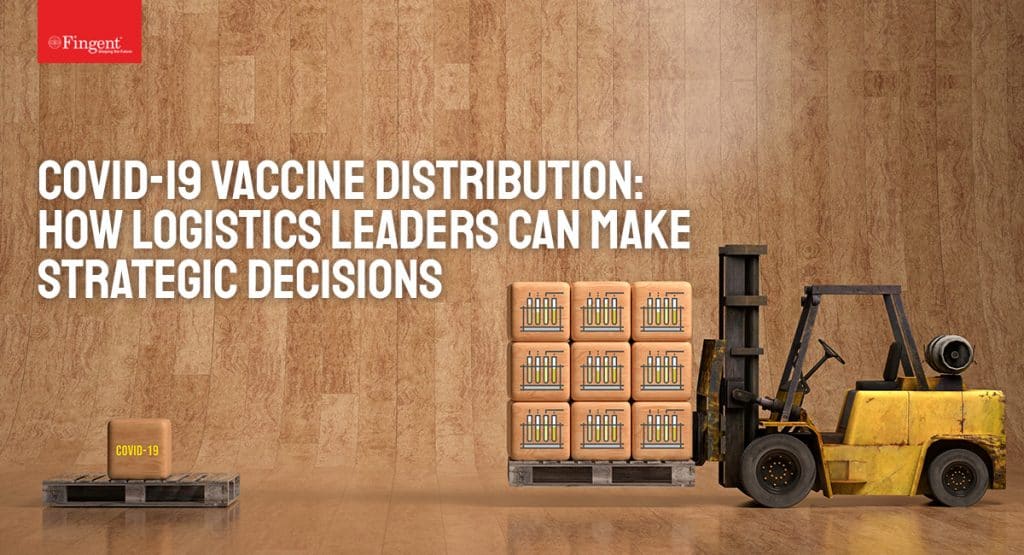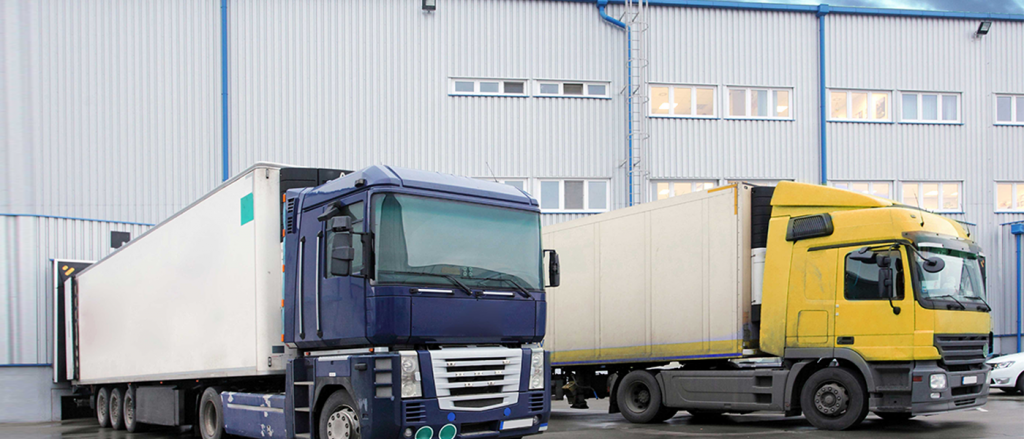Tag: COVID-19 vaccine
SAP ATTP Enables COVID Vaccine Manufacturers to Overcome Supply Chain Vulnerabilities. Find How!
Vaccinating the whole world and making everyone resistant to COVID-19 is a daunting task. From managing product life cycles to supply chain tracking, and massive distribution, SAP Advanced Track and Trace for Pharmaceuticals (SAP ATTP) is helping the world’s leading vaccine manufacturers.
With regulatory requirements looming, meeting the target of delivering COVID vaccines to millions will require an efficient system that will eliminate any hiccups in the supply chain. Pharmaceutical companies must examine serialization and track and trace solutions to control the chain of custody to prevent tampering, counterfeiting, theft, and diversion.
Read more: 7 Practical Steps to be Implemented by Organizations that Engage in COVID-19 Vaccine Delivery
Thankfully, SAP ATTP (SAP Advanced Track and Trace for Pharmaceuticals) has emerged as a solution. It can enable your company to comply with serialization and associate reporting requirements. As SAP ATTP was co-developed with the leading pharmaceutical companies, it can be tailored to address the specific needs of your pharma company and your stakeholders. This blog will explain how SAP ATTP can quicken and smoothen the race to vaccinate the world. Let us begin by understanding what SAP ATTP is.
What is SAP ATTP?
As the name SAP Advanced Track and Trace for Pharmaceuticals suggests, SAP ATTP involves the journey of the vaccine from its source (the pharmaceutical company) to the destination (the end-user) within the supply chain. SAP ATTP enables companies to enforce specific measures to identify the product and view its journey to reduce counterfeit and stolen vaccines.
It addresses the regulatory requirements for serialization, tracking, and tracing of all pharmaceutical products, including COVID-19 vaccines. It is specifically designed to solve the issues with expected data volumes, queries, and reporting as per the guidelines. SAP ATTP is now playing a critical role in major pharmaceutical companies across the globe.
Leading COVID vaccine producers like Moderna, German vaccine manufacturer CureVac, AstraZeneca, and others are relying on SAP to manufacture and distribute vaccines on a global scale. According to SAP’s report, 18 of the world’s top 20 COVID vaccine producers run their entire product lifecycle and supply chain processes on SAP for better traceability, tracking, and serialization.
Read more: SAP for Business: 9 Ways to Maximize Business Performance
What is the significance of SAP ATTP?
If you have experienced a delay in delivering an urgently needed pharmaceutical product, you can understand the potential impact it can have on people and society. If the first challenge was to create and test vaccines at record speed, the next challenge is to vaccinate people across the globe before the virus mutates and becomes more virulent. This demand is stretching the supply chain to its limits. Digitizing their production to achieve production scale and flexibility is critical as most vaccine producers are data-heavy industries.
What are the advantages of using SAP ATTP software?
SAP ATTP is a solution that facilitates data exchange with packaging lines, supply chain partners and contract manufacturing organizations, and warehouse applications. Here are a few benefits of this software:
- Integrates serialization with business processes
- Enables compliance with directives across markets
- Reduces compliance costs for all serialization requirements
- Streamlines and manages a secure pharmaceutical supply chain
- Packaging line integration
- Boosts efficiency of your supply chain
- Enables simple reporting processes
How can SAP help win the race to vaccinate the world?
For perhaps the first time in history, pharmaceutical companies were pushed to focus all their resources on the development of vaccines in record time. And for the first time in history, they are expected to win the race to vaccinate the global population. This is an opportunity for intelligent enterprises to make a difference. SAP rose to assist by providing various solutions to address this pressing need.
1. Enables collaboration with supply chain partners
SAP helps pharmaceutical companies comply with international legislation, which focuses on ensuring genuine medicines reach patients and product authentication. SAP applications enable serial number management and regulatory reporting capabilities. Companies can use SAP to facilitate collaboration with supply chain partners, such as contract manufacturers and wholesalers. SAP cloud platform enables trading partners to exchange large amounts of serialization and associated data.
- Pharmaceutical companies must guard against product counterfeiting, reimbursement fraud, diversion, and medication errors.
- A company must include verification in case of the return of vaccine packs or an apparent tampering of the products.
- SAP’s digital network consists of a blockchain-based verification repository to eliminate such counterfeit products along the supply chain.
- Once manufacturers push data into the blockchain, wholesale distributors can execute verification requests. Since these solutions can be integrated into a pharmaceutical company’s backbone, your company enjoys a holistic view of its end-end processes.
Read more: 6 Tips for Logistics and Supply Chain Leaders to Plan COVID-19 Vaccine Distribution Strategies
2. Ensures patient safety and eliminates the risk of fake vaccines
Pharmaceutical thefts have cost billions of dollars worth of losses annually. One measure taken to overcome this challenge was to implement serialization. Serialization of pharmaceuticals protects the end-user and prevents manufacturers from producing fake goods.
SAP serialization allows you to provide a unique identifier (UID). It enables manufacturers to define regulations based on the laws of each country. For example, certain countries may require the entire product dose to be serialized, while others may require each unit to be serialized. SAP allows you to comply according to your country’s regulations. However, serialization is just the first step.
3. Helps you gain visibility of the vaccine from its source to destination
SAP ATTP allows for a transparent journey of vaccine from its source to the destination. Tracking involves knowing the current status, such as the current location of the shipment, in whose possession it is, and the condition of the vaccine, while Tracing involves knowing the past, such as where the vaccine has been, who had it, and was it handled appropriately.
SAP ATTP is beneficial to companies since the early stages of production and distribution. As it allows you to enter all the product details into the system, it is easy to locate where the product is at any given point in the supply chain. Furthermore, SAP can enable withdrawing a specific compromised batch instead of an entire shipment saving a considerable amount of money.
Pharmaceutical regulations vary from country to country. Nevertheless, all pharmaceutical products must be serialized for easy identification within the supply chain. Apart from this, certain governments may require companies to report data to regulatory bodies or authorities. They may also require verification of the products to ensure it is an authentic product. SAP can make these tasks more efficient as it allows you to:
- Generate and format serialized numbers
- Aggregate goods for quick and easy scanning of the vaccine units
Read more: How SAP Helps Realize Voice-enabled Warehouse Operations
Leave no loopholes in the vaccine supply chain
SAP ATTP helps pharmaceutical industries to gain real-time visibility into the location and condition of their product along the entire supply chain. In addition, it helps them perform better management by allowing real-time reporting and analysis to turn insights into actions fueling the mission to vaccinate the world.
As an SAP Silver Partner, Fingent can help you implement SAP ATTP seamlessly and cost-effectively. Time is of the essence right now, and vaccine producers need to get the vaccine out faster while ensuring safety and compliance. So let’s save lives together. Connect with our SAP expert to see how you can benefit from implementing Advanced Track and Trace for pharmaceuticals.
Stay up to date on what's new

Featured Blogs
Stay up to date on
what's new



Talk To Our Experts
How can companies step up their game and deliver the COVID-19 vaccine efficiently?
The COVID-19 vaccines have received Emergency Use Authorization in the United Kingdom, the United States, Canada, the EU, and a few other countries. Many frontline workers and even the priority population have already received their first doses. Vaccines from several major global manufacturers like India are also set to arrive and be distributed for administration globally.
However, in certain places, the vaccine effort has hit a few roadblocks. Deployment to vulnerable countries and the at-risk group is also slow. As the COVID-19 vaccine is being made available, supplying the doses efficiently with utmost care will be the ultimate logistics challenge. Massive volumes have to be handled, stored through cold chains, and distributed. All processes need to comply with safety regulations. In other words, the vaccines should be distributed quickly and safely worldwide.
In the United States, several organizations play a crucial role in vaccine deployment by adapting their operations to meet the demands. Suppliers, manufacturers, and regulators are stepping up the production of vaccines. Additionally, several thousands of medical, pharmacy staff, frontline workers, and vaccine handlers attend training sessions to understand the peculiarities of different manufacturers’ specific vaccines.
Here, we have discussed seven steps that organizations must engage in to ensure the safe delivery of the COVID-19 vaccine. Following these steps can boost the productivity of your logistics business and efficiency on your future orders and deliveries.
Read more: 6 Tips for Logistics and Supply Chain Leaders to Plan COVID-19 Vaccine Distribution Strategies
1. Ensure raw-materials supplies
Vaccine producers can partner with global suppliers of raw materials and provide support to create redundancies wherever needed in the supply chain. Last year, many manufacturers established new partnerships. However, a wide diversity of suppliers is necessary to meet the demands of each vaccine seeking approval. Manufacturers can negotiate contracts and offer incentives to suppliers who invest in boosting production and stocking-up the goods. Also, producers can evaluate their inventory management and check for stock-outs of essential raw materials.
2. Collaborate with the government
In addition to the above point, the producers must have sufficient interaction with the government to increase production and maintain it. Many manufacturers and suppliers are working closely with the government to manage natural resource allocation. This collaboration must be continued over the economic and public health implications of outsourcing legacy products and optimize production lines for COVID-19 vaccines. Additionally, producers can collaborate with the government to create technology-transfer timelines and develop innovative ways to push bulk volumes to the market. It also helps improve inventory management and distribution.
3. Boost manufacturing by adhering to quality guidelines
As producers need to ramp-up operations in new or existing manufacturing facilities, they could look for opportunities to accelerate the process. Companies can use several digital and analytics tools to expand capacity and scale faster. Additionally, they can accelerate technology transfer time. For example, companies grow and speed up production by conducting engineering runs, validation runs, and stability studies simultaneously.
By collaborating with regulators and manufacturers, authorities can ensure that they meet the established and newly issued guidelines related to the dosage quality and procedures. With such coordination and understanding, higher throughput can be achieved. Similarly, stakeholders can collaborate and employ novel technology platforms such as mRNA to establish new vaccine production standards. Creating best practices at the facilities and the production can help set a clear road map for new manufacturing facilities. Eventually, this can improve future production capacity and throughput while meeting all the quality standards.
4. Optimize cold chain logistics
To mitigate distribution risks, manufacturers and distributors must identify failure points and create redundancies at each stage. For instance, dry ice can be used in warehouses fitted with freezers to deal with power loss or machine malfunctions. So, sources of dry ice must be identified across the distribution routes to restock coolers as required.
Reporting systems can be set up to identify supply-chain disruption events whenever they occur, using the data for refining best practices and procedures to avoid more losses.
In case there is a drop in the vaccine demand to the point that they are not immediately consumed, vaccine inventories must be redistributed to locations with higher demand. Manufacturers and distributors must avoid too much stockpiling to maintain the cold chain and reduce risks to the receiving administration location. If this is not possible in some areas, long-term storage by replenishing dry ice or increasing freezer capacity can be considered.
5. Address labor shortage
Currently, many locations are relying on hospitals and primary-care sites alongside retail pharmacies for vaccine administration. However, as vaccines will be deployed to the general public, more vaccine administrators will be needed. So, deploying the vaccines to larger and streamlined sites will be more efficient. This will improve patient safety, utilization of labor, and speed of vaccination.
Read more: How SAP Helps Realize Voice-enabled Warehouse Operations
6. Reduce spoilage at “care-points”
Manufacturers, distributors, and companies can collaborate to create ways to identify and track instances of spoilage. They can achieve this with proper guidance, training, certification, and optimization of doses.
As vaccines will be deployed to broader populations, accelerating the first-dose allocation as scheduled will be of paramount importance.
A possible way to prevent second doses from spoiling is to ask the vaccine recipient to commit to a second dose appointment at their point of care before administering the first dose.
7. Plan to overcome IT challenges
COVID-19 stakeholders must identify IT systems and assess their ability to perform at scale. They must also agree upon standard requirements and processes to generate and share threat intelligence. Awareness of attacks on the vaccines will lower the chances of seizures in number and magnitude.
Additionally, manufacturers and distributors can commission systems to track if the vaccine recipient has demonstrated immunity. This will not only build confidence in immunity but help people have a recognizable and accepted way of certifying that they have been vaccinated. This is true, especially if it will release them from travel limits and other pandemic-related restrictions.
Read more: How to Pick the Right Logistics Management Software
The organizations involved in the deployment of vaccines are not solely responsible for managing it across the common operating model. The risks can be reduced to a great extent with increased cooperation from stakeholders. So, working groups could get together to identify the risks, assess their impact, and determine if certain risks are evolving and how they can be addressed.
Building smart and custom logistics software applications can help fulfill the increasing demand for last-mile delivery. Fingent helps build healthy tech partnership ecosystems to ensure uninterrupted supply and distribution of your products and services. It is the right opportunity to look at the future of logistics and decide whether to continue on the pre-COVID trajectory or change course. To see how our custom logistics software solutions can improve your team’s productivity, get in touch with us.
Stay up to date on what's new

Featured Blogs
Stay up to date on
what's new


















